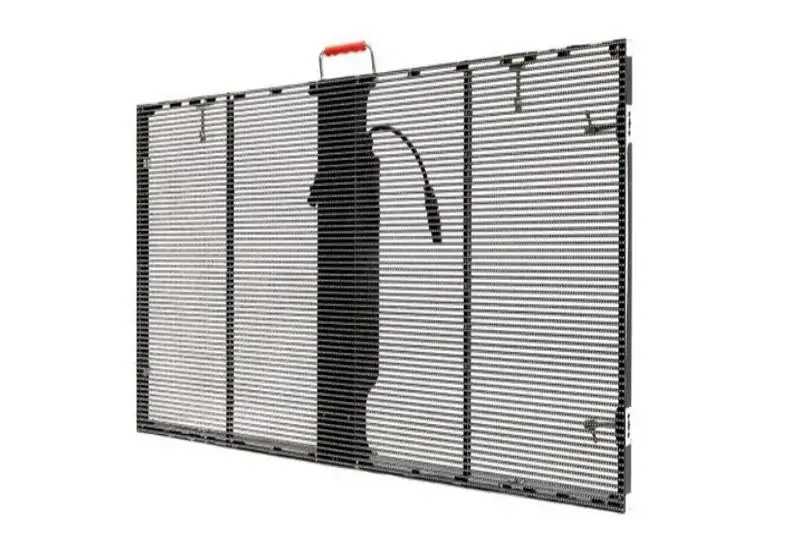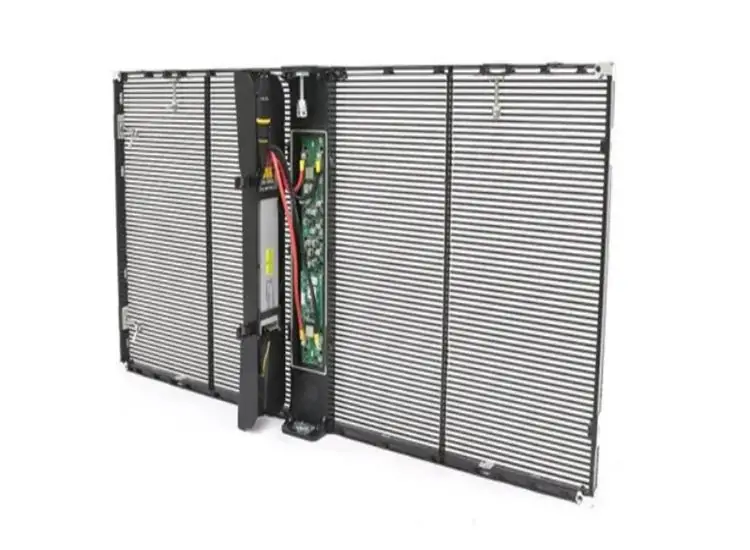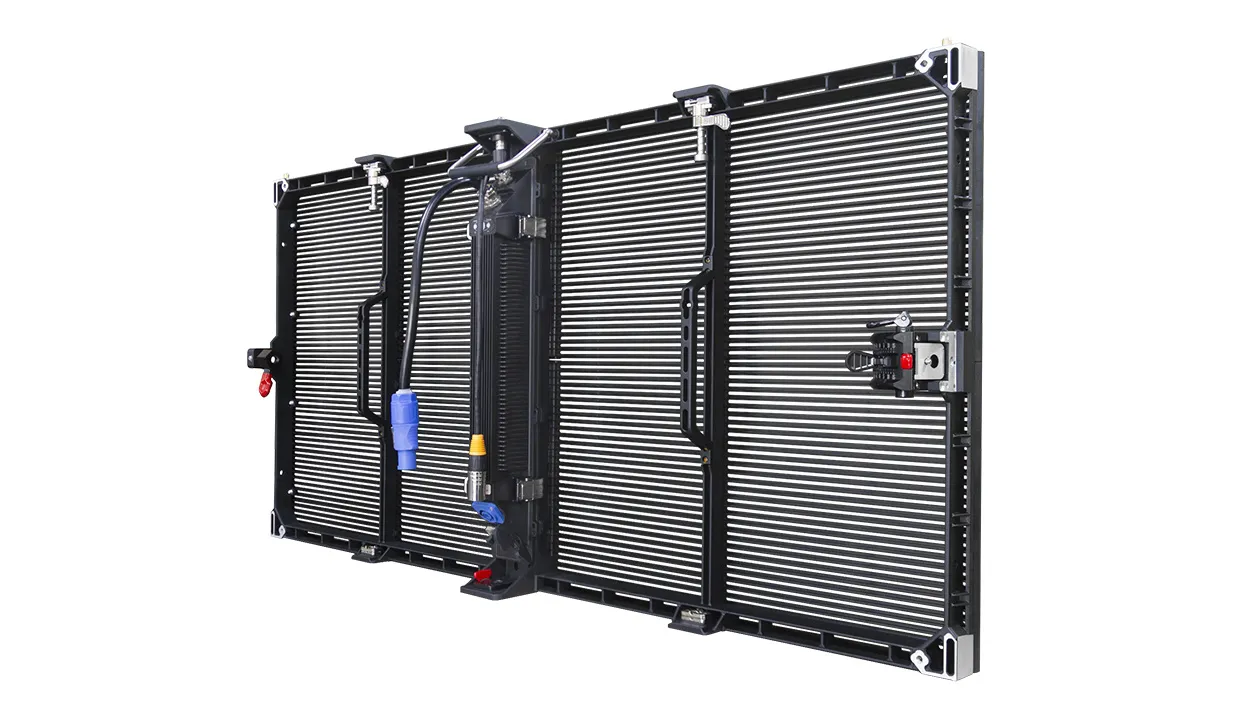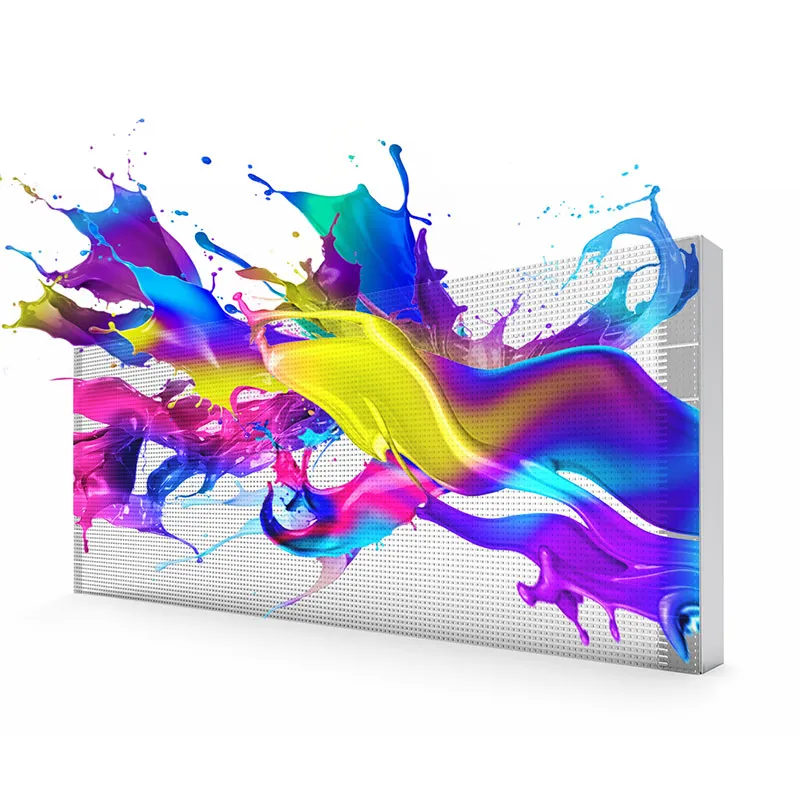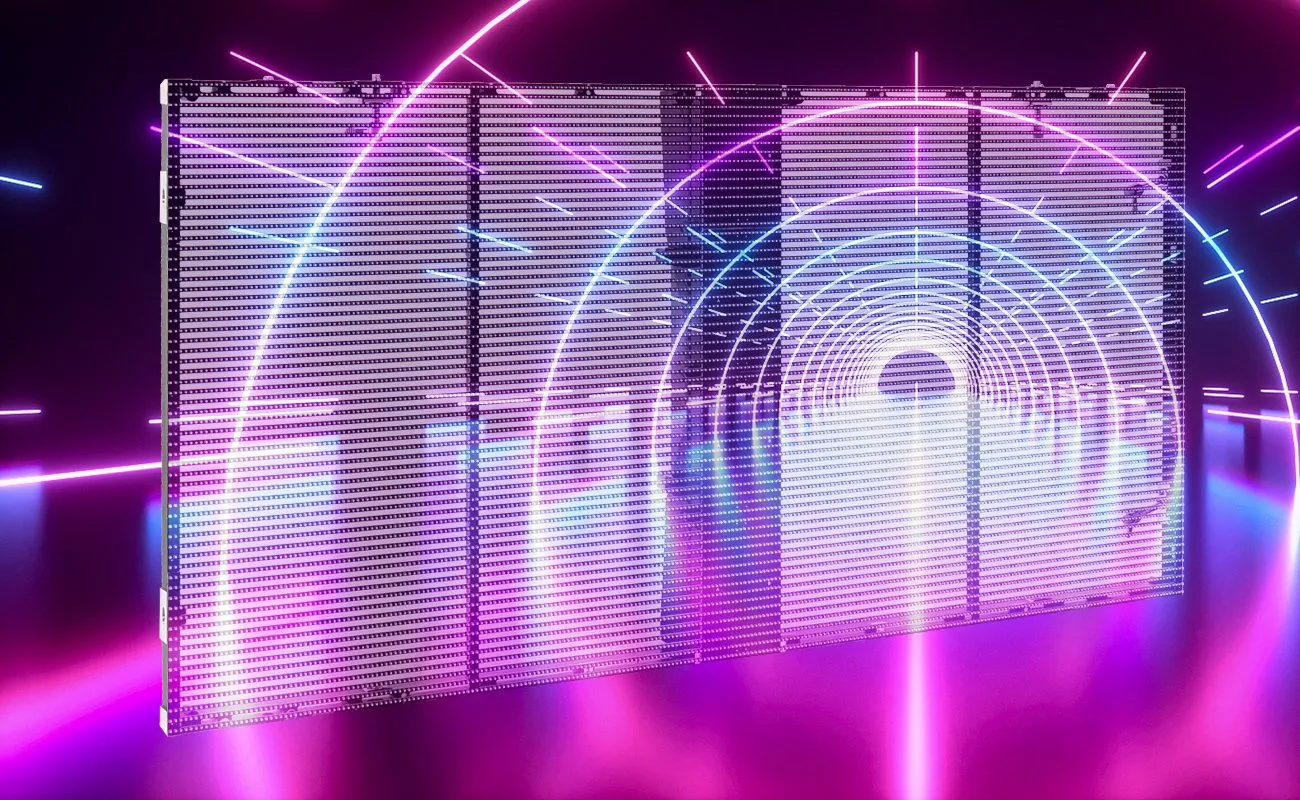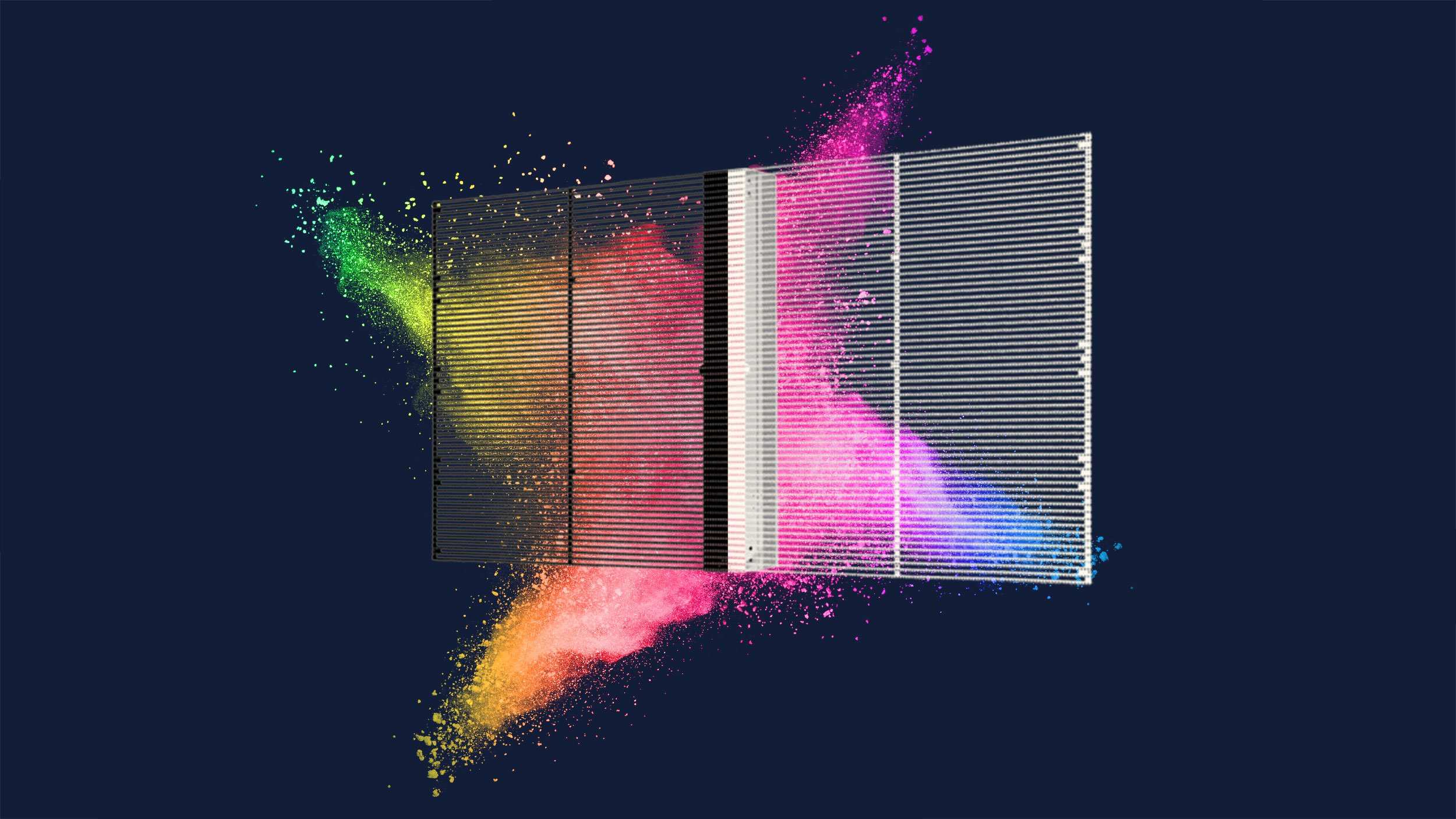Categories
Categories
2025 New LED Screen Price for You
2025 New LED Screen Price for You
Fill in the information and get your LED screen budget immediately!
Today, more and more transparent LED display is being used in various fields such as entertainment, healthcare, education, advertising, e-sports and more. The transparency and thinness of the transparent LED display, combined with illuminated RGB pixels, creates fantastic, vivid images that immerse the viewer in the real world.
Although transparent LED screen are widely used, many people are still curious about the technology and how it works. In this article, we will talk about transparent LED screens in terms of technology, principles, features and types.
Table of Contents
1.What is Transparent LED Screen?
LED Transparency is a new ultra-transparent LED panel technology with 70%-95% light transmittance and a panel thickness of only 10 mm. The LEDs’light is projected onto a transparent surface. This transparency makes both sides of the screen visible.
Transparent LED screens typically consist of transparent LED modules mounted on a transparent substrate such as glass or acrylic. These modules contain individual LEDs that emit light and are arranged in a grid pattern to form the display. The high light transmittance provides a strong visual impact as the transparency of the image is not affected by bouncing light.
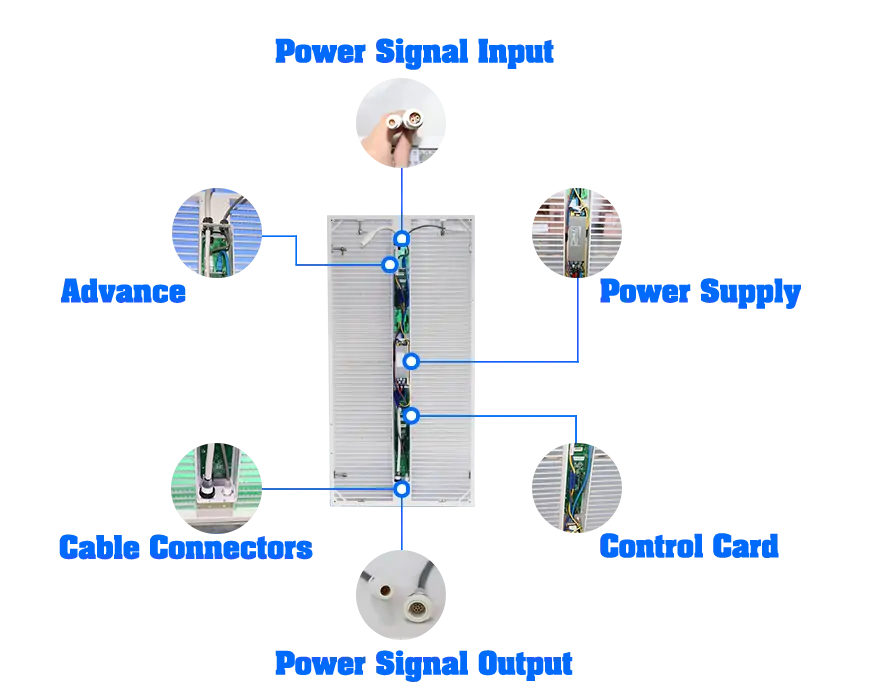
2.Technology of LED Transparent Screen
Transparent LED panel utilizes state-of-the-art display technology to provide a unique and advanced viewing experience. The Light Emitting Diode technology (LED) has evolved from the traditional display technology. It is the basis of the working concept. LEDs are small semiconductor devices that emit light when energised, making them ideal for creating vivid, energy-efficient displays.
Compared to conventional displays, transparent LED displays use LEDs as individual pixels, ensuring colour accuracy, contrast and design freedom. LED Transparent screens are a great way to add transparency while advancing the technology. All components are important, including transparent LED modules, transparent conductive material, and a grid that maintains screen integrity. The transparency of an LED screen relies on components such as translucent organic light-emitting diodes (OLEDs).
2.1 Transparent Technologies
Transparent LED modules, transparent conductive materials and a carefully planned grid layout are the basic components of a LED transparent display.The transparency of an LED screen is a combination of basic components and materials. The correct choice of components and materials is the key to ensuring that the LED display works for a long time under all conditions.
a. Transparent LED Module: A transparent grid of individual light-emitting diodes.
b. Indium Tin Oxide (ITO): A transparent conductive substance that allows current to flow while preventing obstruction of vision.
c. Grid Structure: Provides structural stability while reducing obstruction of vision.
d. Transparent Organic Light Emitting Diode (OLED): Can be optionally added to further enhance transparency.
e. Synergy: When components are integrated together, they provide vivid displays with additional transparency for a variety of industry applications.
3.How Does it Work?
The LEDs in a transparent LED display are arranged in a matrix and are driven by a controller. The controller sends signals to each LED. As a result, it produces different images on the screen. Transparent LED screen has millions of tiny light-emitting diodes.
These LEDs are wrapped by two layers of film. The top film is transparent to allow light to pass through. The bottom film is a reflective layer that reflects the light back to the viewer’s eyes. The LEDs emit light in different colors and brightness to produce images and videos.
In addition, LED transparent displays have a wide viewing angle. As a result, viewers can look at the image from any angle without distortion or blurring. The LEDs behind the image or video go out, while the LEDs in front remain on. As a result, the display appears transparent and the viewer can look through the display.
4.Why is Transparent LED Display So Popular?
Unrivalled Aesthetics: One of the biggest advantages of transparent LED displays is their ability to blend in with their surroundings. Transparent LED screens can be used in retail shops, museums, or corporate offices. They are visually attractive and futuristic.
Energy Efficient: Thanks to brightness control, selective lighting, intelligent power management and low heat generation, the transparent LED panel consumes very little energy, which is good for your environmental credentials. In addition, their ability to work in natural light reduces the need for additional lighting, further saving energy. This environmental aspect resonates with businesses and consumers who value sustainability.
Enhanced Customer Engagement: Transparent LED display screens have proven to be a powerful tool for engaging customers. They can adorn shop windows and allow retailers to creatively display products. Real-world products are combined with dynamic digital content to create a mesmerizing shopping experience.
Captivating Visual Appeal: LED Transparent screen provides clear images even in brightly lit areas and offer stunning visual effects unmatched by other advertising media. These transparent LED screens are able to display dynamic content with transparency, creating an immersive experience for spectators.
No Size Limitations: These creative transparent LED panels can be cut to fit the size and shape requirements of the installation, solving the problem of LED transparent displays obscuring and affecting building facades. They can be made in a variety of unusual LED shapes.
Easy to Install: Transparent LED screens don’t require complicated wiring or hardware installation. It is also easy to mount the screen on ceilings and walls due to its slim design. The display can be set up quickly and easily.
Easy Maintenance: Individual modules need to be replaced without removing the entire LED panel – the all-in-one design makes it easy to perform front and back maintenance. These transparent screens have specialized modules that are very easy to replace. These modules are installed in each section of the LED screen.
Durability and Reliability: The transparent LED panel is rugged and can withstand harsh environmental conditions. They operate reliably in extreme temperatures, humidity and dust environments, ensuring long-term performance and minimal maintenance requirements.
Versatility: Transparent LED screens are versatile and can be used in a variety of applications such as information displays, product displays, and even as partitions in office spaces. Their flexibility of use makes them a valuable asset for organizations looking for innovative ways to communicate with their audiences.
5.Transparent LED Display Types
5.1 Self-illuminated Transparent OLED Screen
OLED is the acronym for Organic Light Emitting Diode, and it represents the latest in display technology. Light emitting diodes are used to produce vivid and compelling images. These screens are made of a transparent layer (e.g. Acrylic or polycarbonate) that displays brighter and vivid video and images. This enhances the user’s experience and gives the visual presentation more depth.
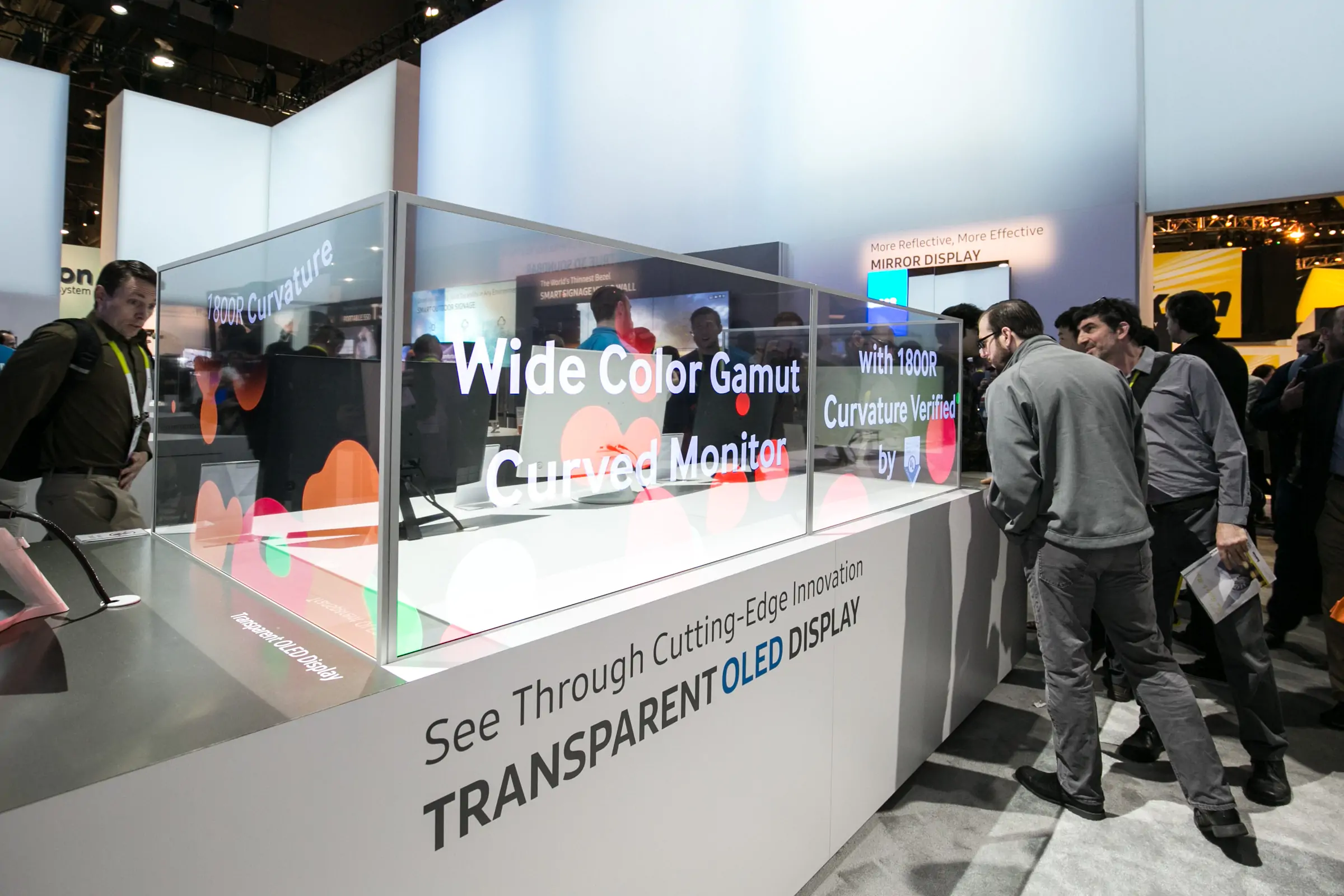
5.2 GOB Transparent LED Panel
GOB, with integrated bonded coating technology, is used for highly protective screens. These LED displays are characterized by a silicone housing combined with a flexible printed circuit board that can be used flexibly according to requirements. The transparent adhesive seals the module surface and extends the life of the display by effectively dissipating the LEDs. This bonding technology provides maximum protection in the event of a drop or impact, ensuring durability and long service life.
5.3 Transparent LCD Display
LCD (Liquid Crystal Display) Transparency is a display technology that allows the viewer to see through the screen while still displaying image or video content. This is achieved by incorporating transparent components and specially designed backlighting technologies that allow light to pass through the screen.
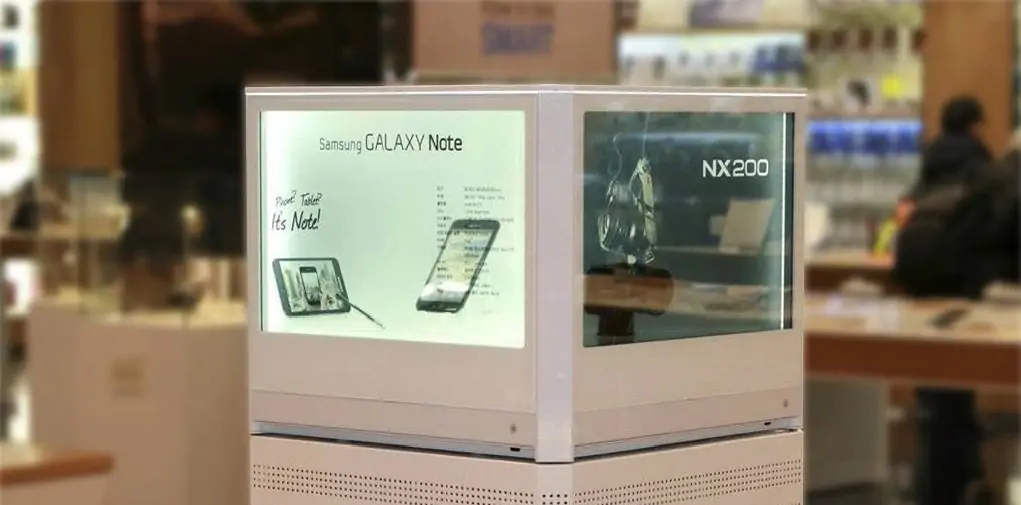
5.4 Projected Transparent LED Screen
Projected transparent LED screens, where an LED projector is mounted underneath a glass screen, allow images to be projected onto a specially designed glass screen. The holographic projection technology not only produces a three-dimensional aerial illusion, but also allows the illusion to interact with the performer and work together to produce a stunning performance effect.
6.EagerLED EA-iFilm Indoor Transparent LED Film Screens
Indoor EA-iFilm LED transparent film screen, mainly used in architectural glass curtain wall, has high light transmittance and ultra-thin characteristics. The LED transparent film screen and glass curtain wall can be said to be a perfect match, EagerLED film screen adds stunning visual effects to urban architecture.
6.1 Main Features of EA-iFilm Indoor Transparent Film LED Display:
1. High Transparency
The transparency of EA-iFilm transparent LED film can reach 90%, the screen is not visible when it is not playing, it does not affect the indoor lighting, and there is no trace of the screen installation when you look at it from a distance.
2. Ultra-Thin and Ultra-Light
The thickness of EA-iFilm transparent LED display film is about 5mm, with weight 6kg/m², lightweight and ultra-thin, no pressure on the glass. Therefore, it is convenient to install and maintain.
3. High Brightness and High Refresh Rate
EA-iFilm LED film screen, as a new generation of high-tech transparent screen products, has a high brightness of 5000cd/m², a high contrast ratio of 2000:1, and a high resolution of 3840HZ, which is worth your choice.
4. High Flexibility
EA-iFilm LED film display can be bent and cut without size limitation, and can be flexibly designed according to customers’ needs.
5. Wide Viewing Angle
Vertical and horizontal viewing angles of up to 140° provide wide viewing angles. This ultra-wide viewing angle brings the largest screen viewing area to viewers and allows them to see clear screen content from different angles.
6. Easy Installation
EEA-iFilm LED film transparent screen is easy to install, directly pasted on the glass surface.
7.Conclusion
In conclusion, the continued popularity of LED transparent display is attributed to their aesthetics, high visibility, versatility, customer engagement, energy efficiency and technological advancements. Looking ahead, the future of transparent LED panels is very bright, with endless possibilities waiting for you.
We believe that by reading this article, you have gained a deep and comprehensive understanding of transparent LED display screens. In addition, if you are considering to buy a transparent LED display, I hope it can provide you with appropriate reference.
GET A QUOTE
GET A QUOTE
Consult us for LED display solutions

